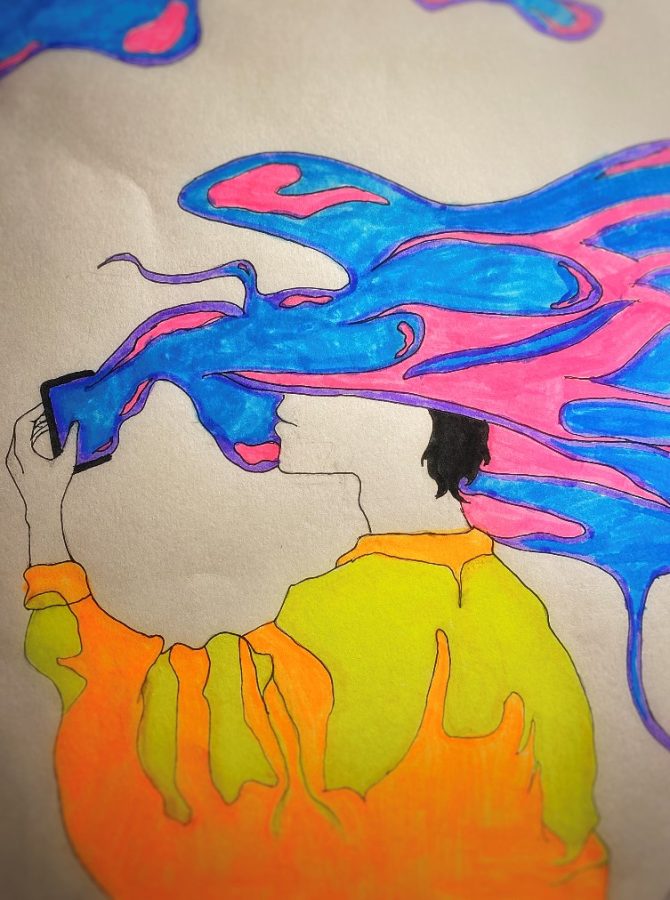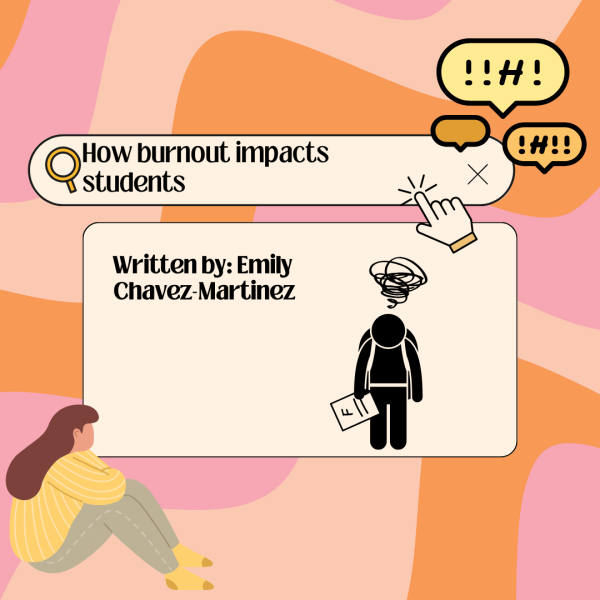Social Media: The Truth Behind the Network
Social Media’s negative impact on society, body image, and adolescent mental health.
Social media platforms such as TikTok, Instagram, Snapchat, and Facebook have become intertwined with daily life in society. But is this really a good thing? As more advanced editing techniques, toxic trends, and increased cyberbullying arise, it can damage the already frail line between reality and fiction, especially for teens. There is an algorithm that lies beneath the surface of intricately crafted websites, making them more addictive than they appear to be. Within the depths of the coding, the sites use the Stimulus-Organism-Response (SOR) model to create a reaction from environmental stimuli (S), which in turn leads to emotional responses (O), thus instigating behavioral responses (R) (Qing Yang, Russel and Mehrabian, PLOS ONE). In more simplistic terms, this means that social media platforms use eye-catching presentations towards color, shape, and size to engage the consumer. They display what you are interested in, hence many websites asking what you what your interests are when you first download it. This reaction is what keeps individuals on the websites, which generates a plethora of money for the companies in return. This also affects the usage time from young adults, causing lengthy distractions from work, school, or discussions.
In addition to this, Penn State completed a study that indicated there was a correlation between when young adults began to purchase smartphones (2010-2015), and when young adults sought out help for mental health issues at university counseling centers and other resources available on campus. In fact, there was a 30% increase in their annual visits (Center for Collegiate Mental Health). Within the past few years, the usage of social media has only increased. According to Pew Research Center, “…the three most popular social media platforms among teens are YouTube (used by 85% of teens), Instagram (72%) and SnapChat (69%).” In a 2018 survey, “…95% of teens now say they have or have access to a smartphone, which represents a 22-percentage-point increase from the 73% of teens who said this in 2014-2015″ (Pew Research Center). This data creates a concerning image of how many young adults are accessing social media platforms and being influenced by the SOR modeling and marketing techniques they use. If increased social media usage correlates with anxiety, depression, and poor body image, then you can understand the unprecedented spike in poor mental health within recent years. This has been especially prevalent at Dakota, with the administration and staff pushing more mental health programs like Ok2Say or KnowResolve to combat this new enemy.
Further proof of how this affects adolescents was shown in a study conducted by the Royal Society for Public Health,. They found that “…Snapchat, Facebook, Twitter and Instagram all led to increased feelings of depression, anxiety, poor body image and loneliness” (Child Mind Institute). This can also be supported by the 2018 study completed by the University of Nevada. They found “…one in six teenagers have experienced at least one of six different forms of abusive behavior online: name-calling (42%), spreading false rumors (32%), receiving unsolicited explicit images (25%), having their activities and whereabouts tracked by someone other than a parent (21%), someone making physical threats (16%) and having explicit images of them shared without their consent (7%)” (University of Nevada, Reno). Social media has developed a significant and extremely toxic presence in many teens and young adults’ lives. The platforms have allowed people to spread false news and issue threats, causing anxiety, fear and anger in communities. They have allowed people to send explicit images without consent, which has sadly included many minors who should not be exposed to such content. People have recorded and shared dangerous and illegal activities, creating trends or challenges which have sometimes led to young people being injured or dying. Individuals have been told to kill themselves or were threatened with being killed by a random user online. This cannot be the intended outcome the companies originally had planned for when creating their platforms. Yet, they are doing too little to stop the toxicity from spreading. In accordance with the Anxiety and Depression Association of America and the University of Nevada, “…20% of people who have at least one social media account feel they have to check them at least once every three hours to avoid feeling anxious. This phenomenon goes beyond “fear of missing out,” or FOMO. In fact, it now has its own name: social media anxiety disorder…” They also report that the symptoms caused by FOMO-or social media anxiety disorder-are, “Stopping to check social media in the middle of a conversation, spending more than six hours each day using social media, lying about the amount of time spent on social media, withdrawing from family and friends, failing in attempts to cut back on social media use, neglecting or losing interest in school, work and favorite activities, experiencing severe nervousness, anxiety or withdrawal symptoms when not able to check social media, and having an overwhelming desire to share on social media feeds” (Anxiety and Depression Association of America, University of Nevada). Unfortunately, with algorithms like SOR and tricky marketing techniques, social media usage will only continue to increase. Mental health issues and phenomenon like FOMO will continue to show itself in teens and young adults as well. Much more needs to be done to spread awareness of SOR, as well as the dangers of obsessive social media usage.
Your donation will support the student journalists of Dakota High School. Your contribution will allow us to purchase equipment and cover our annual website hosting costs.

Jade Lilly is a senior at Dakota High School. This is her first year writing for the Dakota Planet, but she has plenty of experience towards writing professional...






